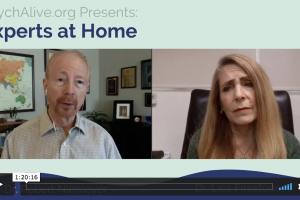Busting the Myths About Suicide
 There are many commonly held beliefs about suicide that keep us from trying to help people at risk. Here are some of the typical misconceptions about suicide that are NOT true:
There are many commonly held beliefs about suicide that keep us from trying to help people at risk. Here are some of the typical misconceptions about suicide that are NOT true:
Most suicides are caused by one particular trigger event.
A person who attempts suicide has to feel bad about themselves for a long period of time. The current crisis may have been triggered by a particular event, but only someone who is already in distress will consider such an extreme reaction. You can help this person by trying to see the current crisis through his or her eyes and getting him or her to help.
Most suicides occur with little or no warning.
This is not true, particularly in teenagers. Most teenagers tell someone – often their friends or siblings – but not necessarily their parents, teachers or counselors, who may be in a better position to help. What teens who are friends with someone who may be suicidal need to realize is that they can’t afford to keep their friend’s secret, and they can’t solve their friend’s problems on their own. With the elderly, they often go to their medical doctor in the last week of their lives, seeking help for the physical symptoms of depression.
It is best to avoid the topic of suicide.
Not talking about suicide does not prevent suicide. Research shows that 80 percent of people have thought about suicide at one time or another, so you won’t put the idea in someone’s head by asking them if they’ve thought about suicide. We are better off talking about it than ignoring someone who may be in crisis.
People who talk about suicide don’t do it.
This is not true, as most people who do it have talked about it. We are better off overreacting than under-reacting. Paying attention to suicidal statements can save lives.
Suicide attempts are only attention-getting behaviors.
On the contrary, someone having a history of prior suicide attempts puts them at greater lifetime risk of dying by suicide. If someone is willing to gamble with their life to get our attention, we are better off paying attention than sending the message that they have to do something more drastic to get our attention. Again, we are better off overreacting than under-reacting.
A suicidal person clearly wants to die.
This is just not true. Suicidal people are ambivalent. Part of them wants to die but part of them wants to live. All 29 people who have survived a suicide attempt jumping off San Francisco’s Golden Gate Bridge have said they regretted their decision as soon as they jumped.
Once a person attempts suicide, he or she won’t try it again.
Again, having previously attempted suicide puts someone at lifetime greater risk of dying by suicide. This is true even if previous attempts were not apparently life threatening. A person with two or more previous attempts is at much higher risk of dying by suicide.
Suicide is a complex problem.
This idea makes us think that there is nothing that we as an individual can do to prevent a suicide. This is not the case. We have to remember the simple healing power of making ourselves personally available to someone when they are in distress. Click here to learn some of the ways that you can help someone in suicidal crisis.
If a person who has been depressed is suddenly feeling better, the danger of suicide is gone.
Often when a person who has been in a lot of psychological pain suddenly appears to be feeling better, it may be a sign that they have come up with the “perfect solution” to end their lives. This is a time we need to ask again whether they are thinking about suicide and not assume that the crisis has passed.
Poor people are the source of most suicides.
In reality, suicide occurs all across the socioeconomic spectrum. All types of people from all kinds of families with varying financial situations have been known to commit suicide.
Being religious protects against suicide.
For some people who belong to a religion that considers suicide a sin, this can be a protective factor. But simply being born into a religion that considers suicide a sin does not protect against suicide.
GET HELP:
IF YOU OR SOMEONE YOU KNOW IS IN CRISIS OR IN NEED OF IMMEDIATE HELP, CALL 1-800-273-TALK (8255).
This is a free hotline available 24 hours a day to anyone in emotional distress or suicidal crisis.
International readers can click here for a list of helplines and crisis centers around the world.
Click here to locate a therapist in your area
Return to our Suicide Prevention Advice Page
Related Articles:
Coping Suggestions for the Suicidal Person
Helper Tasks – How You Can Help Someone Who’s Suicidal
Suicide: The Warning Signs
Suicide: How You Can Help Someone at Risk










Leave a Reply
You must be logged in to post a comment.